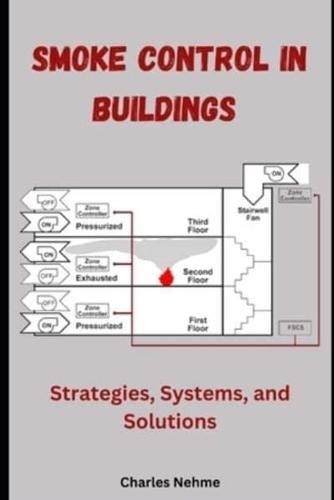Publisher's Synopsis
Smoke control in buildings is an essential aspect of modern fire safety engineering, playing a critical role in protecting lives, preserving property, and ensuring the continuity of operations during fire incidents. The complexity and significance of effectively managing smoke movement within various building types demand a comprehensive understanding of both fundamental principles and advanced technologies.
The genesis of this book lies in the increasing recognition of the challenges posed by smoke during fires, not only to the occupants but also to the firefighters and emergency responders. Smoke, often the leading cause of fatalities in fires, can obscure visibility, impede evacuation, and cause significant health hazards due to its toxic components. As such, it is imperative for engineers, architects, designers, and safety professionals to be equipped with the knowledge and tools necessary to design, implement, and maintain effective smoke control systems.
"Smoke Control in Buildings: Strategies, Systems, and Solutions" is meticulously crafted to bridge the gap between academic theory and practical application. This book aims to serve as a comprehensive guide, offering insights into the physics of smoke, the design and implementation of various smoke control systems, and the integration of these systems within the broader context of building design and fire safety strategies.
In the initial chapters, we delve into the foundational principles of smoke behavior and movement, providing readers with a solid grounding in the subject. This is followed by an exploration of the different types of smoke control systems-passive, active, and hybrid-highlighting their respective advantages, limitations, and applications. We also discuss the crucial aspects of designing these systems, taking into account performance objectives, regulatory requirements, and the intricacies of system integration.
Advanced computational tools and methods form a significant part of modern smoke control strategies. Therefore, a dedicated chapter is provided to familiarize readers with the latest fire and smoke modeling software, complemented by real-world case studies that illustrate the practical application of these tools. Furthermore, we address the importance of proper installation, commissioning, and ongoing maintenance to ensure the reliability and effectiveness of smoke control systems throughout their lifecycle.
The inclusion of diverse case studies offers a pragmatic view of smoke control challenges and solutions across different building types, from high-rise structures to underground spaces and public assembly venues. These examples serve to contextualize theoretical knowledge, providing readers with valuable lessons drawn from real-world scenarios.
Looking ahead, we explore emerging trends and technological innovations that are shaping the future of smoke control. The integration of smart building technologies and the evolving landscape of standards and regulations are examined to prepare readers for upcoming developments in the field.
This book is the result of extensive research and collaboration with experts in fire safety engineering, architecture, and building services. It is intended to be a valuable resource for professionals and students alike, offering both a thorough understanding of smoke control principles and practical guidance for their application.
We hope that "Smoke Control in Buildings: Strategies, Systems, and Solutions" will inspire and equip you to enhance fire safety in buildings, ultimately contributing to the protection of life and property in our built environment.









